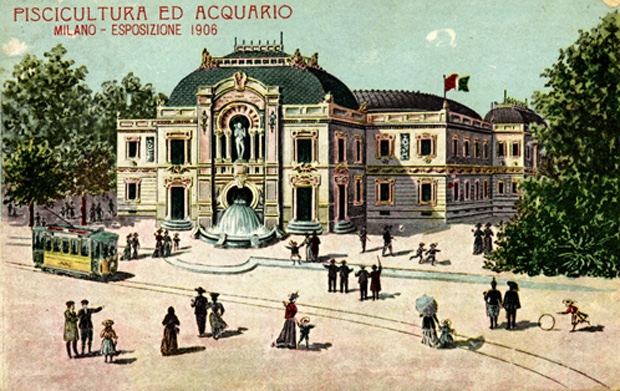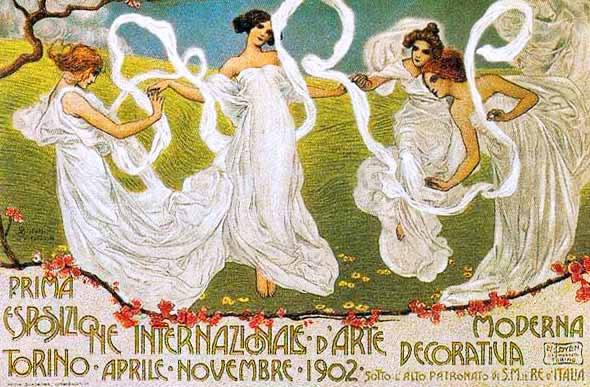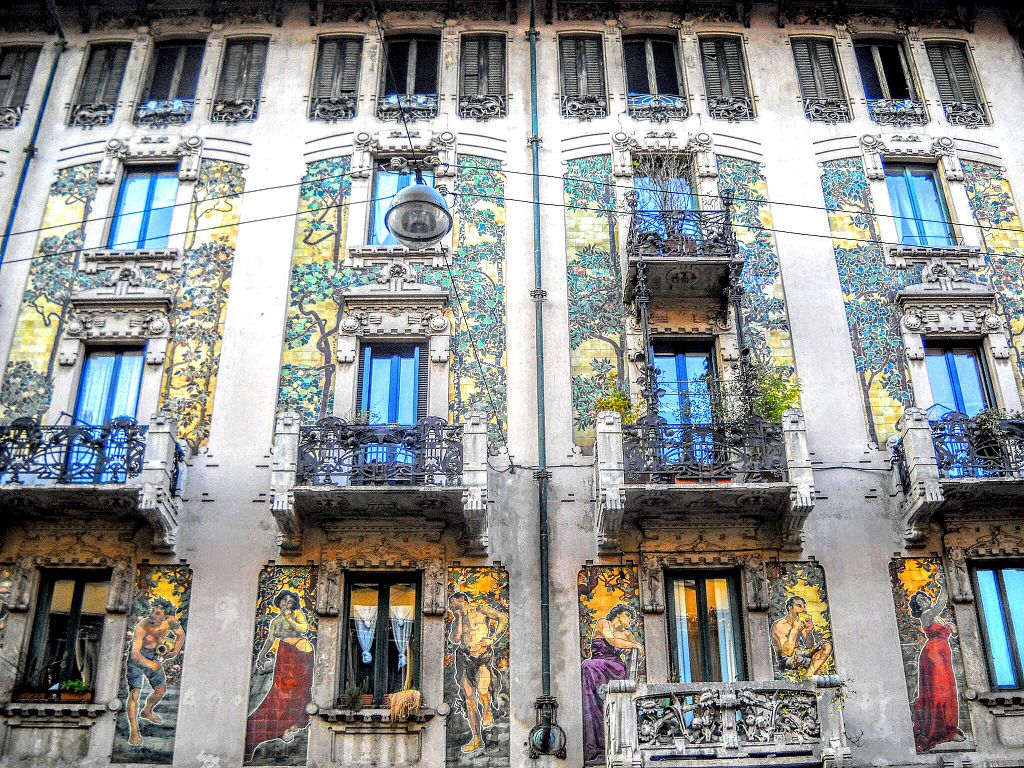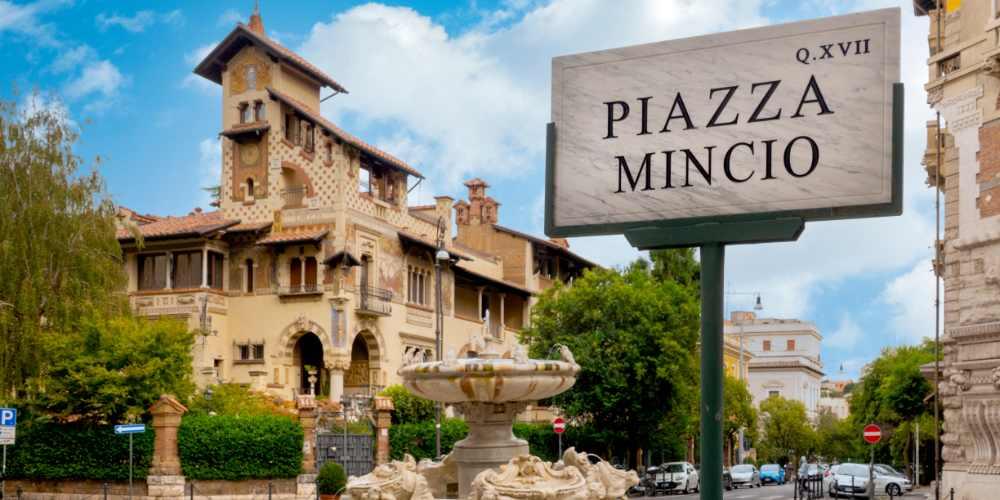The Liberty Style in Italy: the new art from Rome to Turin
The Liberty Style in Italy, as in all of Europe where it is called Art Nouveau, also has great masterpieces in all the most important cities starting from the two capitals Turin and Rome passing through Trieste, the Liberty in Milan, Viareggio, Savona, the Liberty in Palermo and many others.


Art Nouveau, or Liberty Style in Italy (also “Floral Style” due to its inspiration from the natural world), is a style of art and design born at the end of the 19th century and lasting until the beginning of the 20th century throughout Europe ( and part of America).
It is characterized by sinuous lines, organic shapes and floral motifs. In Italy, Art Nouveau had a significant impact on architecture, design and the decorative arts.
The movement behind Art Nouveau freed art from the restrictive chains of tradition, allowing architects to rediscover the joys of sinuous form, non-representational design, floral motifs and cutting-edge techniques (possibility of shaping glass, iron and metals, use cement…).
It was a movement “permeating” all the arts: from the classical arts such as painting, drawing, graphics to the applied arts. Art Nouveau design encompassed common objects, furnishings, lighting, fashion, furniture design, jewelry, lighting, wallpaper, fabrics, interior design, decoration and lighting. architecture were all affected by the “invasion” of the new aesthetics.
Each country developed its own stylistic variant of Art Nouveau and Italy was no exception. Italian architects, and in particular Sicilian, Piedmontese and Lombard, were among the most passionate supporters of the new “free style”.
In particular, architecture underwent a real “Liberty” revolution with many artistic expressions distributed throughout the Bel Paese.
Liberty Style Architecture in Italy
In Italy examples of Liberty architecture are, starting from the capital Rome, theCoppedé District cwhich houses an eclectic group of villas and residential buildings designed by the Florentine architect Gino Coppedè at the beginning of the 20th century. The two most particular elements of the building are the imposing and elaborate “Arcone” arch as well as the delightful fountain, which decorates the center of the neighborhood square, decorated with stone frogs.
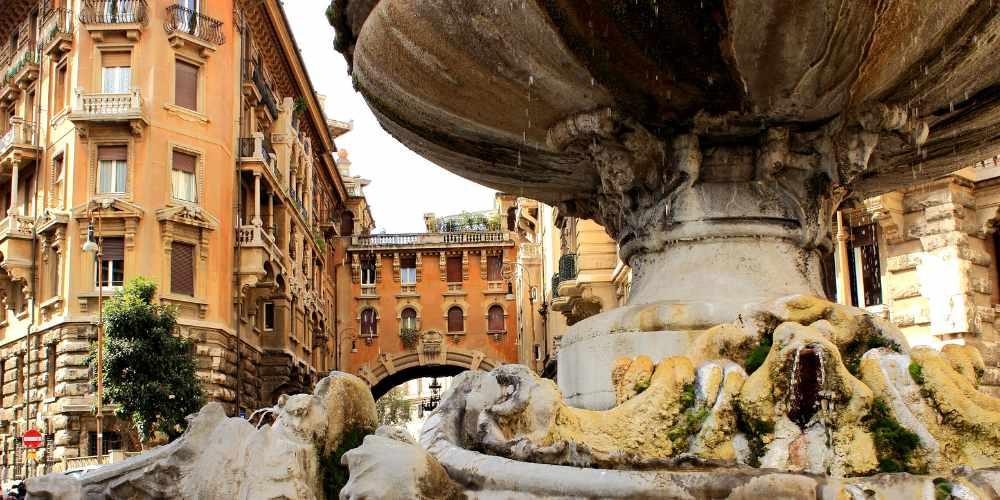
The portal – the Arcone – at the entrance to the Coppedè District seen from the fountain in the central square decorated with animalistic figures, frogs and floral elements.
In Turin Liberty Style is present in many districts. The city, at the time in full economic and urban expansion, saw the construction of bold new buildings influenced by the emerging style at the beginning of the 20th century.
One of the most suggestive is Florio Nizza Home (1901), designed byGiuseppe Velati Bellini and built as part of an urban renewal project in the heart of the city’s historic centre. A fascinating mix between French Neo-Gothic and Turin LibertyPalazzo della Vittoria (Victory Palace), also known as”House of Dragons” or Carrera Home, in the “Cit Turin” (Little Turin in piedmontese language) District. Designed by the engineer Gottardo Gussoni, the five-storey building is a triumph of details attributable to the two styles. Of particular importance are the two winged dragons positioned on the sides of the entrance door from which the house took its nickname.

On the outskirts of Turin, in the municipality of Collegno, we even find an entire very particular village built at the end of the nineteenth century by order of Napoleone Leumann, an important entrepreneur of Swiss origin, for the workers of his cotton mill. The Design ofNeumann Village was assigned to Pietro Fenoglio that designed it in the Liberty Style. Inside today you will find a vintage station (the Turin – Rivoli), the Church of Santa Elisabetta in eclectic style, the old primary school and many other historic buildings in Art Nouveau style.
Pietro Fenoglio, engineer, was the greatest interpreter of the new architecture in the first Italian capital. Many buildings were designed by the engineer Fenoglio, among which must obviously be mentioned: Fenoglio – La Fleur Home certainly one of the most important Art Nouveau buildings in Turin and throughout Italy which is immediately striking for the delightful floral friezes that cover the facade, the wrought iron balconies and the splendid polychrome glass window. We mention also Villa Scott, famous for being chosen by Dario Argento as the location of the famous horror film “Profondo Rosso“.
SAlso in Turin (but there would be so many to mention – editor’s note) lastly, in the San Salvario area, we point out the beautiful entrance door that the people of Turin have nicknamed “Pomegranates Door“. Decorated with two pomegranate trees – of clear French Art Nouveau influence – made of wrought iron and full of green leaves and red fruits inserted in a peacock tail frame in floral style, this door is one of the most beautiful examples of Liberty Turin.
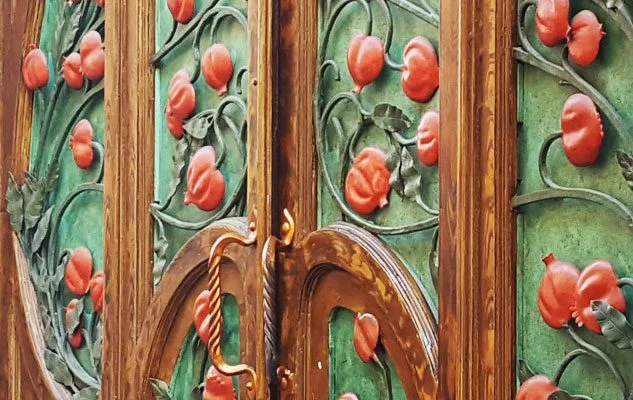
The Pomegranate Door in Turin in the San Salvario district.

Postcard of the Liberty Pavilions of the Turin Universal Exhibition of 1902
In Milan, the Universal Exhibition of 1906 gave great impetus to the development of the Art Nouveau style in Italy up to Rome and Palermo, bringing European Art Nouveau there, since dozens of pavilions were built in this new style in the location of the exhibition and in numerous public buildings, thus decreeing the definitive consecration of the new style that was coming strongly from France and Austria and which was becoming the dominant style in the city.
Among the many expressions of Liberty architecture in Milan that are absolutely worth mentioning is Castiglioni Palace. During the early 1900s the entrepreneur Castiglioni
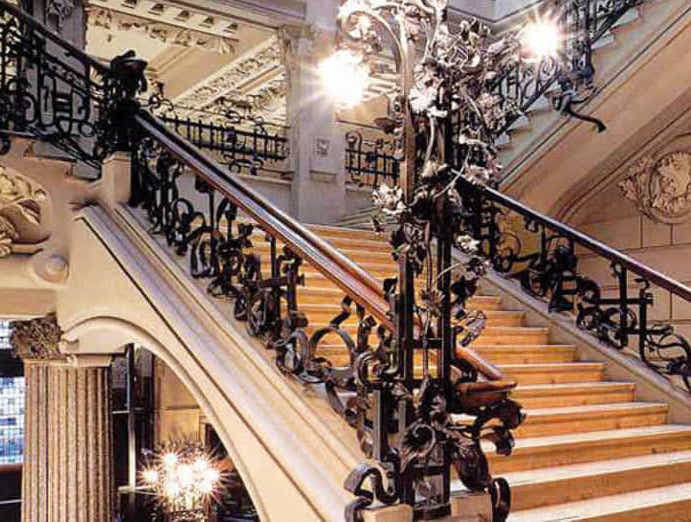
he wanted something real to show his success and greatness. So he chose to have this Art Nouveau palace designed by the architect Sommaruga. Unfortunately the allegorical female statues (rather naked), the caryatids at the entrance were not included. The Milanese reacted with laughter: the house was nicknamed “Ca’ di ciapp” (the house of butss), the bum-house. In the end the statues were unfortunately removed (in the photo some details of the internal monumental staircase).
There are also many expressions of the Art Nouveau style in Italy in public buildings; among these it is worth mentioning for Milan the Civic Aquarium, located in a beautiful Art Nouveau building in Sempione park, it is one of the oldest aquariums in the world. A spectacular transparent tunnel bridge allows visitors to pass under the main pool. From inside you can admire the different species of fish from every angle.
The monumental Civic Aquarium in Milan in the Sempione district in a vintage postcard.
In Palermo th Liberty Style link his success to the name of the Architect Ernesto Basile which creates some of the most significant architectural creations of the Art Nouveau style in Italy.
The end of the 19th century was Palermo’s golden age. The enormous wealth and high-class connections of families like the Florio and the Whitaker they had transformed the city into a sort of playground for the European elite who competed in the construction of their increasingly “flamboyant” and imposing homes by importing Art Nouveau to the island which was upsetting creativity throughout the European continent.
One above all, mention should be made of the magnificent creation of the Teatro Massimo – Palermo’s Opera Theatre, curated by Basile. Giovan Battista Basile, Ernesto’s father, was the one who laid the stylistic foundations for the imposing arrival of Liberty in Sicily with his project for Villa Favaloro.
From his father’s architectural ideas, Ernesto worked not only in Rome, but also on a series of iconic buildings that still adorn the streets of Palermo today, including:
- Chiosco Ribaudo
(1894) – in Piazza Verdi in front to the Teatro Massimo.
- Villa Igiea
(1899) – Basile was commissioned by Vincenzo Florio to carry out a complete redesign of an existing building. It is now a 5 star hotel located in a superb panoramic position above the port of Acquasanta
- Villino Florio (1902) – an extraordinarily original villa in Viale Regina Margherita. It is just off Via Dante and was commissioned by the heir to the Florio estate

Villino Florio in Palermo – great expression of Liberty Style in Italy, is in Palermo, designed by the architect Basile.
It becomes truly impossible to mention all the great expressions of the Art Nouveau style in architecture in Italy. However, we like to remember some great expressions here such as:
- Villa Sticchi
in Santa Cesarea Terme in Puglia, Lecce province. Overlooking the sea, this splendid villa in which Liberty, one of the most particular expressions of the Liberty Style in Italy (or Italian Art Nouveau), meets Arab-style decorative elements, was also chosen as the location for numerous Italian and international films.

Villa Sticchi in Cesarea Terme in Lecce province.
- Palazzo delle Terme (Spa Palace) of Salsomaggiore Terme in Emilia Romagna in the province of Parma, a great example of Liberty Style in Italy, is located in the heart of the city, of which it has become the main symbol, and was the work of Tuscan architectsUgo Giusti and Giulio Bernardini and was inaugurated on May 27, 1923.
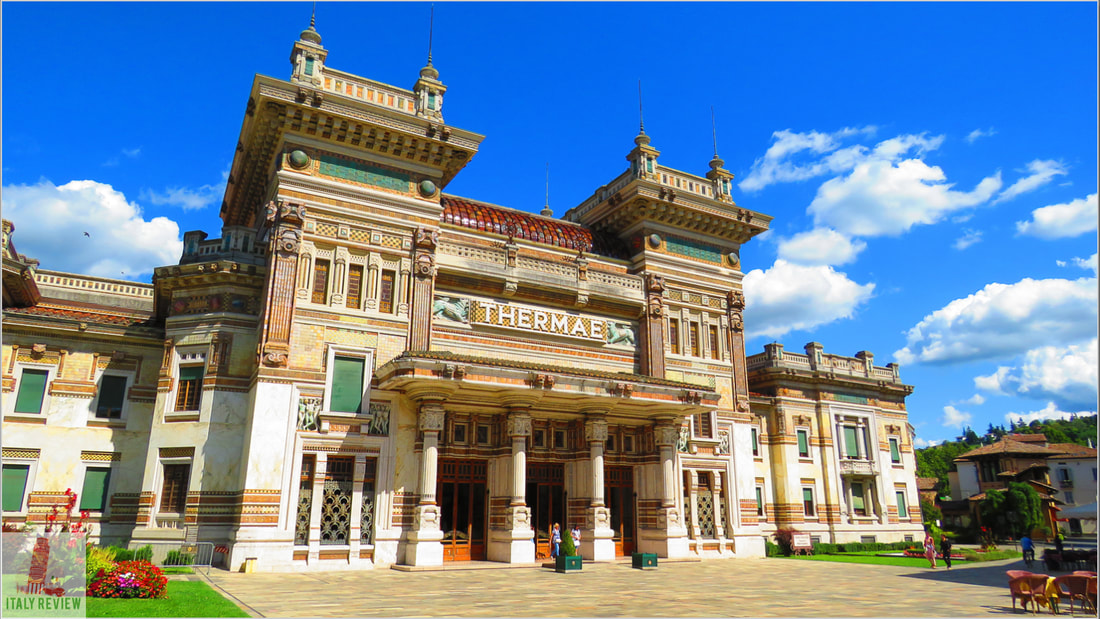
Palazzo delle Terme – the facade of the building in the heart of Salsomaggiore Terme (Parma).
For further information we recommend about the Liberty Style in Italy these website:
- The Buildings of Turin on website Guida Torino – Liberty Style in Italy
- The secret Liberty Rome on the website Visit Italy
- Everything about Liberty Art in Italy on the website Arte Liberty – Liberty Style in Italy
On 1Solo Vintage we can also read the article: Art Nouveau e lo Stile Liberty in Europa.

